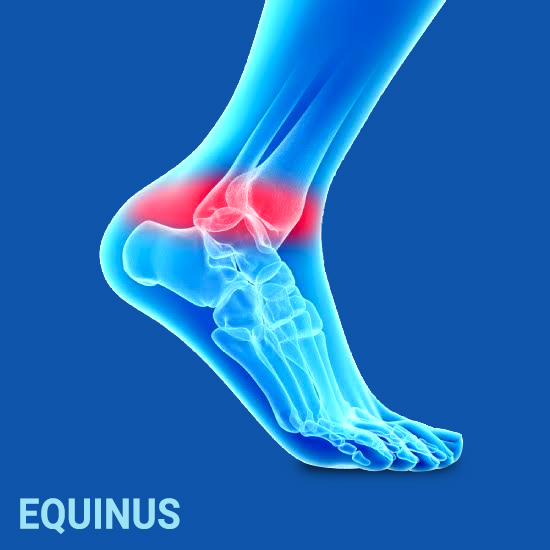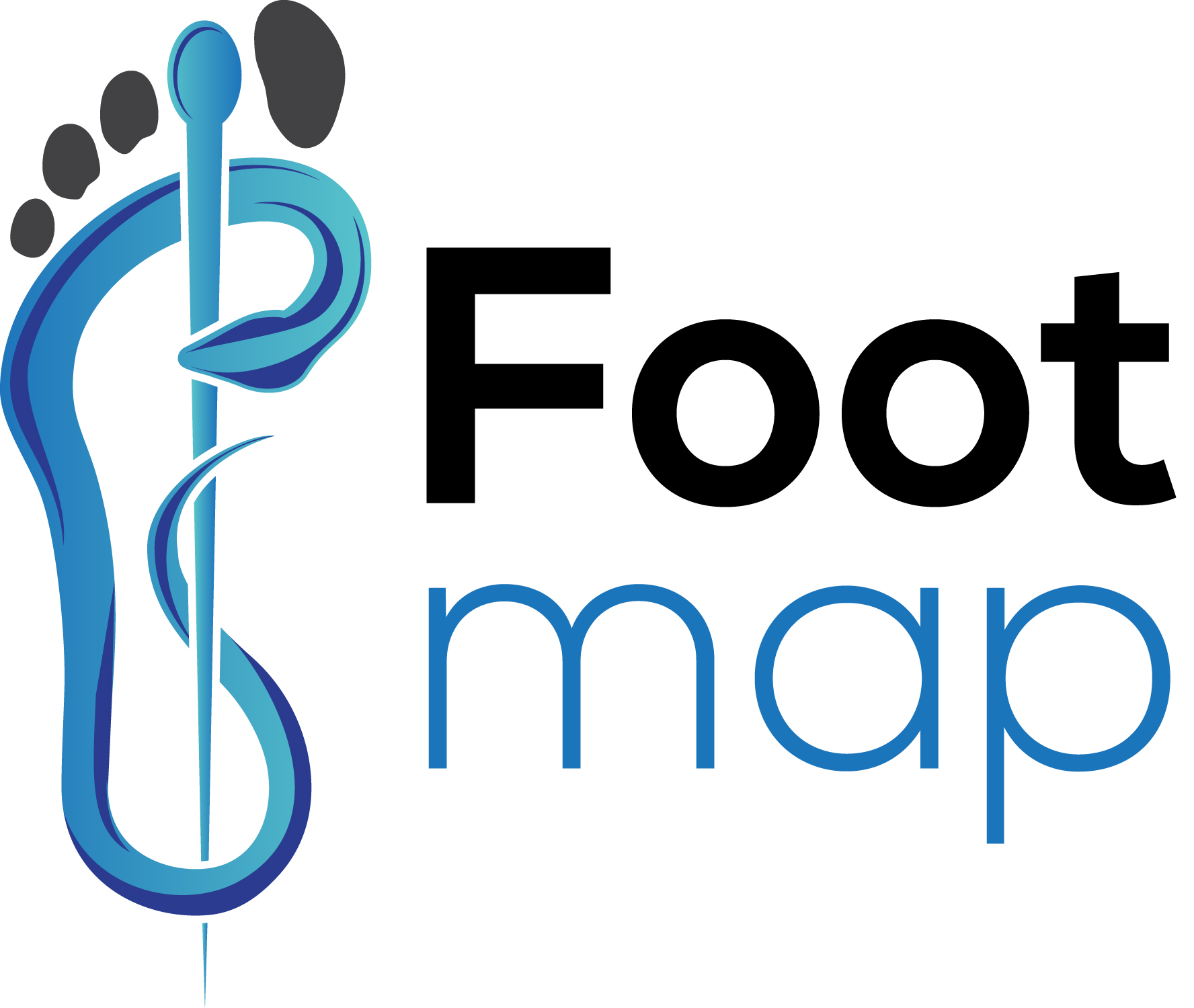Equinus
 Equinus foot deformity is a condition where the upward bending motion of the ankle is limited, and the foot remains held in a downward position.It becomes difficult to pull the ankle and foot up due to the inability to dorsiflex (raise the foot upwards) the ankle joint enough to allow for normal pain-free ambulation. The ankle joint lacks flexibility,and the movement is limited. This condition is a result of tight Achilles tendon or calf muscles; sometimes,an equinus is congenital.The limited muscle flexibility and limited range of motion can lead to injury, make it difficult to walk, and place stresses on the foot in unusual places, as well as cause knee, hip, or back pain. One or both feet may get affected with Equinus.
Equinus foot deformity is a condition where the upward bending motion of the ankle is limited, and the foot remains held in a downward position.It becomes difficult to pull the ankle and foot up due to the inability to dorsiflex (raise the foot upwards) the ankle joint enough to allow for normal pain-free ambulation. The ankle joint lacks flexibility,and the movement is limited. This condition is a result of tight Achilles tendon or calf muscles; sometimes,an equinus is congenital.The limited muscle flexibility and limited range of motion can lead to injury, make it difficult to walk, and place stresses on the foot in unusual places, as well as cause knee, hip, or back pain. One or both feet may get affected with Equinus.
Causes
- Tightening of two major muscles in the leg, namely, gastrocnemius and soleus
- Congenital or acquired
- Being in a cast or crutches
- Frequently wearing high heeled shoes
- Diabetes
- Ankle injury, bone block
- One leg being shorter than the other
- Spasms in the calf muscle
- Underlying neurological disorder
Symptoms
Limited range of ankle motion, especially flexibility to bring the foot upwards towards the shin (upward bending of the foot)
Diagnosis
Patients are generally unaware of this condition. They visit the Doctor to seek relief for foot problems. The Doctor will physically examine the foot to evaluate the range of motion when you flex and extend the knee. The Doctor may recommend X-ray and Neurological Evaluation
Treatment
Non-surgical Treatment
such as stretching and strengthening exercise to help with muscle tightness, are advised.Custom orthotic devices or arch support to help distribute the weight and to control muscle and tendon imbalance. Heel lifts, Night Splints are also used for relieving the symptoms associated with Equinus.
Surgical Treatment
Each patient’s specific needs will vary, and your surgeon will help to determine the best surgery. Some common procedures are
-
- Achilles tendon lengthening
- Gastrocnemius recession
- Removal of bone blocking the ankle motion such as bone spur
Recovery
In most cases, equinus tends to be more treatable and easily corrected with the help of stretching, bracing, and orthotic devices.
Complications
Equinus may contribute to a variety of other foot problems such as
-
- Calf cramping
- Arch/heel pain
- Metatarsalgia
- Hammertoes
- Flatfoot
- Achilles Tendonitis
- Arthritis of the midfoot
- Bunions
- Ankle pain
- Shin splints
- Pressure sores – the ball of the foot, the arch
